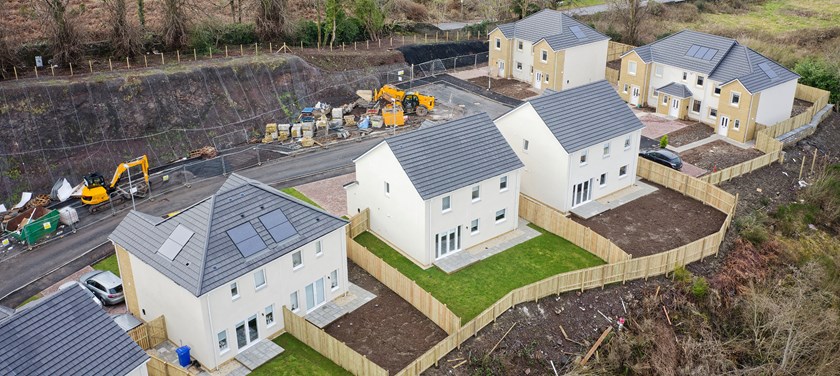Collaboration agreements for development
Insight

To make the most of a development opportunity sometimes it will be best for a landowner to join forces with another landowner or landowners. With extra land a more ambitious scheme for development can be put forward and there is a bigger pie for the parties to share.
In our Spring 2018 Newsletter, Robert Field examined some of the tax considerations where landowners pool land for development. This article aims to introduce some of the agreements typically encountered when bringing landowners together for development and some of the common issues beyond tax.
Collaboration agreement
The overarching agreement that binds together the landowners is often called a collaboration (or consortium) agreement. Where there is a separate developer or promoter they are sometimes a party, but they tend to have their own independent agreement with the landowners as well.
Collaboration agreements have varying levels of sophistication. Some are short documents with broad aspirations; others contain a comprehensive set of binding obligations. At the very least, the collaboration agreement will sketch out the process to achieve a planning permission and most will contemplate a sale (sometimes with the landowners building themselves or granting a build licence). The agreement tends to envisage equalisation (treating all the land benefiting from a planning permission as equally valuable) and cost sharing between landowners.
Other agreements
The additional documents required tend to depend on tax and whether there is a developer or promoter.
The most common strategies we come across to achieve tax-efficient equalisation are land pool trusts and cross options. Land pool trusts often involve a trust deed (a declaration recording the existence of a trust), a joint ownership agreement (similar to a collaboration agreement and addressing matters such as who owns what shares and how decisions are made) and a Land Registry transfer (transferring the property to the trust). Cross options involve each landowner granting the other landowners an option over their land which is released on receipt of an agreed sum.
At the time of writing it is believed that HMRC have now accepted the principle that equalisation can be achieved in a much simpler form as part of the collaboration documentation. This would obviate the need for complicated land pool trusts or cross options. We anticipate this approach will get considerable publicity in the coming months.
Some landowners are prepared to go it alone without a developer or promoter and appoint architects and other professionals themselves. More often there will be a promotion or other agreement with a developer or promoter to use their expertise to obtain planning and the landowner will then either sell or grant a build licence (and the developer/promoter be paid out of the proceeds).
Project objectives
Collaboration agreements can last for a long time. Generally there will be a period to obtain planning permission, often with a run-off for appeals, and then a period to allow sales to take place. For larger schemes, where development is phased, this can mean a 50 year time frame.
It is difficult to plan so far ahead; particularly when there might not even be a planning allocation at the outset. However, the parties do need to decide what is important to them collectively and individually and expressly set out their objectives (together with a general obligation to act in good faith to achieve the objectives).
Often the parties will be content to maximise value and the area of a planning permission. This can sometimes lead to a conflict if one landowner seeks particular design standards. There is evidence that, over the full course of a development, high design standards can still maximise value. Yet some developers are wary of higher up front construction costs eating into the prospect of making a quick return out of sales.
Some landowners will want to retain houses once built as rental stock and this may involve adjusting landowner shares as no sale proceeds for these houses will go into the pot.
There should always be a minimum sale price or receipt and the parties will need to agree a suitable method of indexation of the minimum sum.
Decision making
Where landowners promote land themselves, all decisions need to be made by the landowners themselves (and this process needs to be well run). If there is a promoter or developer some of the decisions will be made by them, but a structure will still be needed for the more important matters where landowner approval is required.
The parties should agree a procedure for organising meetings (which may involve a project manager) and how decisions are made. Unanimity may be necessary for some key issues (such as tax); otherwise it will often be appropriate for votes to be weighted according to size of landholding. Promoters should not receive a vote in addition to a landowner as that could distort the voting ratios.
A good dispute resolution clause is necessary to ensure (except where unanimity is required) the project can continue in the event of disagreement. Sometimes the landowners will want to agree at the outset a list of experts, although it can be hard to look too far into the future.
Infrastructure
Larger developments include significant infrastructure costs. Roads (sometimes bypasses and motorway junctions) will need to be built and there are likely to be new community facilities such as schools and sports pitches.
Landowners will want to control the negotiation of section 106 agreements so that they reflect how the development will be phased. Landowners will not want to inadvertently trigger a section 106 payment (particularly by laying infrastructure before the first sale) and they will want to ensure that payments are appropriate for each phase. On sale, landowners will want to be able to insist that the purchasing developer gives suitable indemnities and security (which, given the sums involved, might be a bond) so that the landowners do not end up on the hook for payment.
Landowners may want to leave open the possibility that they lay infrastructure themselves. If so, there will need to be some flexibility over who pays for the infrastructure delivery (a third party funder may be required). Tax advice will be needed as laying infrastructure is a trading activity.
Collaboration agreements are rarely straightforward but the potential upsides of working with other landowners in bringing forward a large development are significant. Flexibility is required given all the variables (not least the state of the housing market) and they can be long term agreements. The most successful landowners have clear objectives from the outset.
If you require further information about anything covered in this briefing, please contact Paul Krafft, or your usual contact at the firm on +44 (0)20 3375 7000.
This publication is a general summary of the law. It should not replace legal advice tailored to your specific circumstances.
© Farrer & Co LLP, July 2019






